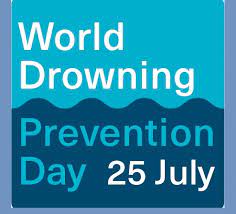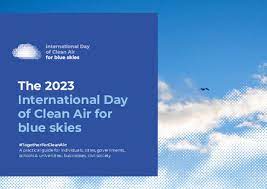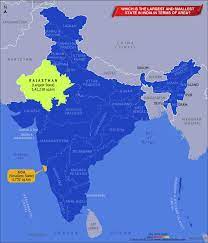
World Drowning Prevention Day 2023: Date, Significance and History– Every year on July 25, World Drowning Prevention Day is observed with the goal of raising awareness about the terrible and long-term impacts of drowning on families and communities, as well as teaching people about critical measures to prevent such tragedies. Approximately 236,000 individuals lose their lives to drowning annually, with children between the ages of five and 14 being more susceptible to this tragedy. Research indicates that youngsters and teenagers living in rural areas are at a higher risk of drowning compared to their urban counterparts.
Daily Current Affairs Quiz: July 2023
Significance of World Drowning Prevention Day 2023
World Drowning Prevention Day holds immense significance as it serves as a global observance dedicated to raising awareness about the critical issue of drowning and its devastating impact on individuals, families, and communities worldwide. By focusing attention on this preventable cause of death and injury, the day aims to mobilize efforts to prevent drowning incidents and save lives.
Some of the key reasons why World Drowning Prevention Day is significant are:
- Saving Lives: Drowning is a leading cause of death, especially among children and adolescents. The day saves lives and prevents unnecessary tragedies by emphasising the need of water safety and drowning prevention measures.
- Raising Awareness: Many people are unaware of the magnitude of the drowning problem and the risk factors involved. World Drowning Prevention Day helps to spread awareness about the global impact of drowning and the importance of taking preventive actions.
- Targeting Vulnerable Populations: The day highlights how specific populations, such as children, rural communities, and low- and middle-income countries, are especially vulnerable to drowning incidents. It emphasizes the need for targeted interventions to protect these vulnerable groups.
- Advocacy for Prevention Measures: Through this observance, various organizations, governments, and communities come together to advocate for effective drowning prevention strategies, such as teaching swimming skills, water safety education, proper supervision, and better flood risk management.
- Policy and Program Initiatives: World Drowning Prevention Day prompts governments and organizations to evaluate existing policies and programs related to water safety and drowning prevention. It promotes the deployment of evidence-based drowning prevention methods.
- International Cooperation: The day fosters international cooperation and collaboration to address drowning prevention on a global scale. It encourages countries to share best practices and resources to tackle this common challenge.
- Empowering Communities: By promoting water safety education and rescue skills, the day empowers individuals and communities to take proactive measures in preventing drowning incidents and responding effectively in emergencies.
Finally, World Drowning Prevention Day is an important forum for uniting people, organisations, and governments around the world in the battle against drowning. We can reduce the incidence of drowning events and ensure safer aquatic conditions for all by recognising the significance of this day and implementing preventive actions.
History of World Drowning Prevention Day
World Drowning Prevention Day was established through the U.N. General Assembly Resolution A/RES/75/273 in April 2021, aiming to address global drowning prevention. Drowning, a form of suffocation resulting from the mouth and nose being submerged in water, often occurs in isolation or situations where others are unaware or unable to assist the victim.
To combat this issue, the World Health Organization (WHO) has emphasized the importance of creating safe spaces away from water for children, teaching them how to swim, and enhancing flood risk management to reduce drowning deaths.
According to the WHO, drowning claims the lives of at least 236,000 people each year, ranking among the top 10 leading causes of death for individuals aged one to 24. The majority of drowning fatalities in low- and middle-income countries occur in wells, domestic water storage containers, rivers, and lakes, with rural children and adolescents being disproportionately affected.
The United Nations has proposed several preventative measures, such as establishing secure locations away from water sources for preschool children with capable childcare, including creches. Other prevention strategies encompass teaching swimming and water safety, training bystanders in safe rescue techniques, installing barriers to control water access, providing instruction on safe rescue and resuscitation techniques, and implementing and enforcing regulations for safe boating, shipping, and ferry movement.





